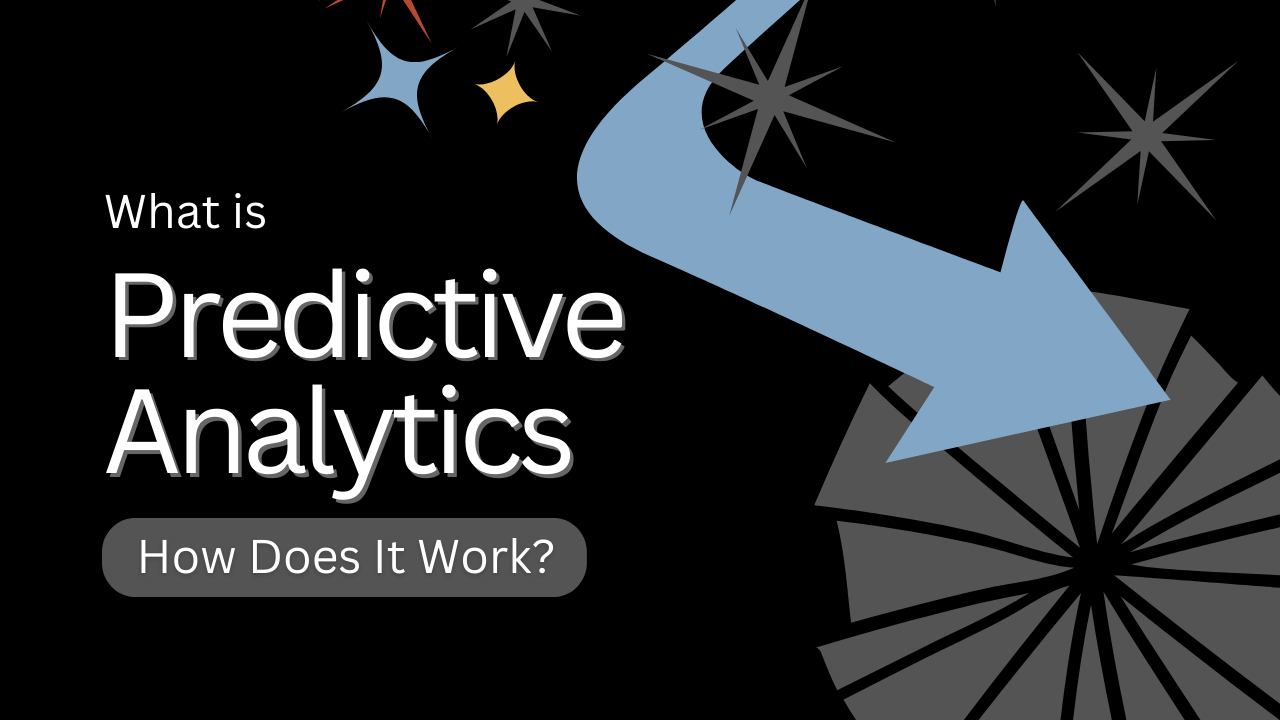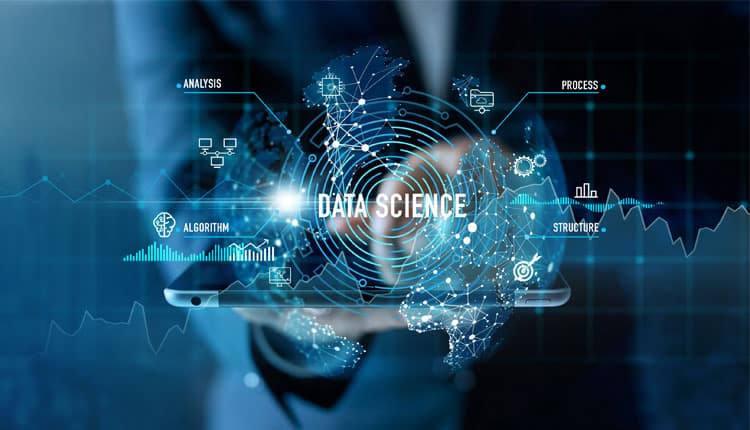Predictive analytics is just one of the four types of analytics used across different facets of business. The other three are descriptive, diagnostic, and prescriptive.
All these business analytics models are implemented to find answers to some problems.
What will happen = is answered by descriptive model
Why did it happen = is answered by the diagnostic model
What should happen next = is answered by the prescriptive model
What will happen in the future = is answered by the predictive model
Every business wants to know the future in advance to steer the right amount of effort in the right direction, to prevent possible loss, and gain maximum profit. They get an idea through predictive analytics. This sometimes comes in the form of algorithm-enabled medical advancements.
What is it?
Predictive analytics is a data analytics technique that uses statistical models to make predictions based on historical data. As its name suggests, it is based on predicting the outcome, by learning the patterns, and behavior, and analyzing available data and statistics. It supports complex forecasts. It is used to streamline operations, boost revenue, and mitigate risk for many industries, including banking, retail, utilities, public sector, healthcare, and manufacturing. It is being used across civil, mechanical, chemical, reservoir, software, electrical, and petroleum engineering disciplines; Healthcare, HR, Power BI, AI, Excel, Data Science – just to name a few.
Who does it?
Business analytics are skilled in predictive analytics, which mandates them to be aware of SQL Query languages to develop visualization to present to stakeholders.
How to implement it?
Often regression analysis tools are used to implement predictive analytics. These are (1) Single linear regression – with two variables, or (2) Multiple regression – with three or more variables. All variables are related via mathematical equations to predict outcomes.
Consuming Predictive Analytics in the Right Way
Data Science (predictive analytics) has a profound effect in accelerating the circular economy. This implies that the by-product is being re-used, acting as a raw material to create something new.
The use of predictive analytics helps in reducing waste and pollution. It reduces emissions, increases resource efficiency, and increases supply resilience. Analytics experts or analytics managers have to play a keen role in supporting this transition. They have to counter operational and business obstacles. They have to think of alternative strategies to increase the use of recycled materials. They have to think of new rental models to reduce the impact on the environment.
The outcome or the result of implementing predictive analytics services into a specific field vary. It reduces carbon emissions by reducing non-biodegradable waste in a circular model.
Correct usage of predictive analytics streamlines operations, increases revenue, and reduces risk. In banking and financial services it detects and reduces fraud, measures credit risk, and maximizes cross-sell and up-sells opportunities. In healthcare it detects and manages the care of chronically ill patients, tracks specific infections. In manufacturing, predictive analytics identifies factors that lead to reduced quality and production failures, and optimizes parts, service resources, and distribution. Lenovo used predictive analytics to better understand warranty claims, which led to a 10–15% reduction in warranty costs.
In human resources, it matches prospective job applicants with available job offers, and increases employee engagement. In marketing P.A. helps companies understand customer-related trends such as their purchase cycle and responses, and elevate opportunities for cross-selling. This helps businesses acquire, retain, and nurture their customer base, and optimize market spend.
Ways To Implement Predictive Analytics
Predictive analytics solution providers use techniques to analyze data to gain insights and opportunities. It makes use of Decision trees to understand and handle datasets with missing variables. It uses neural networks that imbibe Machine learning methods that model complex relationships, especially when there’s no known mathematical formula. Neural networks also validate the results of other models. In Regression models predictive analytics is implemented to estimate the strength of relationships between variables.
It is being used to categorize data based on historical knowledge in Classification models. It is being used to Group data based on similar attributes in Clustering models. P.A captures data points in relation to time in Time-series models. It streamlines a time series analysis technique that combines past values with moving averages and differences to forecast sales trends and predict future demand in ARIMA (Auto-Regressive Integrated Moving Average).
How is Predictive Analytics used?
Any new technique that is implemented is in an effort to increase operational efficiency and improve the decision-making of the business in order to gain a competitive advantage.
In finance to forecast future sales, revenue, and expenses by analyzing historical financial data and industry trends, aiding in future planning and decision-making.
In entertainment and hospitality, staffing needs to forecast customer influx, optimizing staffing levels in hotels and casinos to balance costs and improve service quality.
In Marketing for forecasting sales trends and customizing campaigns by analyzing past consumer behavior, improving targeting and increasing conversion rates.
In Manufacturing to prevent malfunctions, for anticipating machinery malfunctions using historical data, and triggering alerts to prevent costly downtime and repairs.
In HealthCare for early detection of allergic reactions, administering and predicting diseases, and saving lives.
Manufacturing predictive analytics companies often make use of predictive analytics to manage product inventory, assess cost, wear and tear, and requirement of replacement over time.
In their marketing efforts, companies often need to know how to sell, how to make their promotions effective, what to manifest, what to expect, how to patch up the difference between demand in the market and supply of goods.
What to carry along?
Predictive analytics is one of the 4 types of business analytics that makes use of machine learning to generate a predictive model or a structure for certain, specific business applications. Different Predictive Analytics techniques are often used together to mine data for insights. Businesses use predictive analytics to determine if a product is sold disproportionately to a certain demographic and then use that information to predict repeat sales. HR determines if a potential employee is a good cultural fit, which employees might leave, and if employees are contributing to business outcomes.



